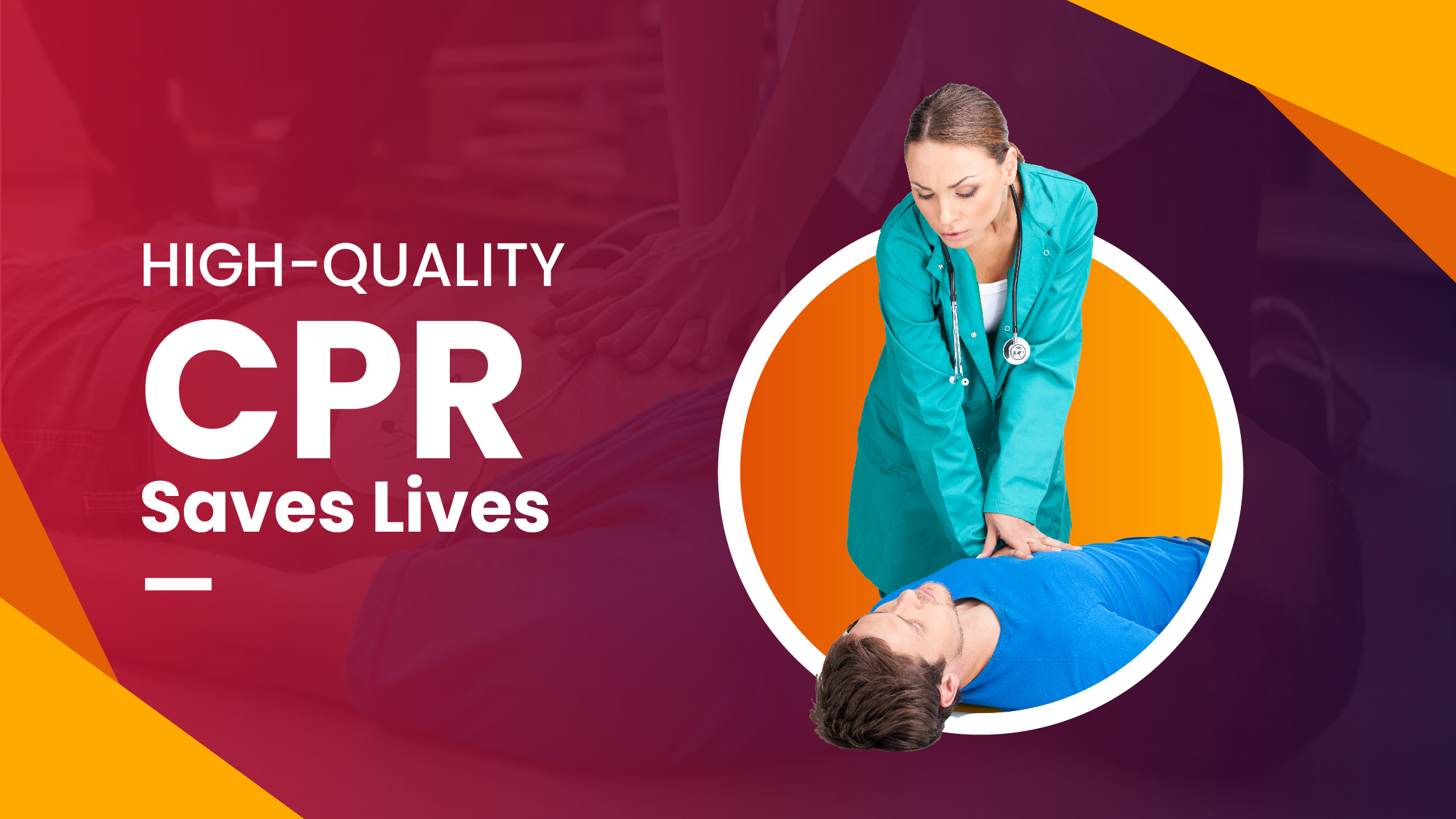
“It’s a wonderful day to save lives.” This trendy phrase brings to mind what each healthcare worker does in their everyday work routine.
In this blog let us learn to perform CPR the right way. In most cases, CPR is not as efficient for the reason that the rescuer is not applying sufficient pressure on the victim’s chest. This frequently happens because the rescuer is afraid and is apprehensive if he is hurting the victim. The objective of performing CPR is to deliver an artificial heartbeat and preserve blood circulation. CPR is not achieved without applying enough pressure. It is noted that blood is not circulating as it should, and the victim is not receiving the required assistance.
What is Resuscitation Quality Improvement program?
The Resuscitation Quality Improvement (RQI) programme was developed in collaboration by the American Heart Association (it will be an add for them ) pioneers in simulation training technologies, and released to the healthcare sector in 2015. It is a cutting-edge, technologically based platform for quality and performance improvement that makes sure healthcare personnel acquire and maintain top-notch CPR skills on the job rather than in a classroom. RQI provides audio-visual feedback and coaching on a quarterly basis, and it is backed by data and analytics that monitor and assess performance. RQI helps healthcare professionals validate their proficiencies and boost their confidence in order to deliver immediate, life-saving patient care.
The results of patients who get poor CPR are catastrophic. The traditional BLS card, which is valid for two years, does not attest to a healthcare professional’s ability to give the high-quality CPR required to save a victim of cardiac arrest. Less than 26% of patients who experience cardiac arrest in U.S. hospitals each year survive. More healthcare professionals utilising the RQI programme could lead to better patient outcomes and perhaps even more lives saved. RQI 2020, a comprehensive quality improvement programme that the AHA have established, will provide healthcare systems and professionals with greater CPR quality at a lower cost.
How to perform correctly?
Training is required for CPR. Several organisations provide CPR instruction in addition to AED use. Most times, sudden cardiac arrest happens without warning. The person stops breathing correctly and goes completely unconscious.
By looking for indications of life, the victim’s responsiveness can be ascertained as the initial stage in CPR. Check for breathing if the subject falls unconscious unexpectedly. Rescuers are warned not to perform dangerous operations like listening to the victim’s breathing during the COVID-19 pandemic. It is advised that you converse with the victim instead and look for additional indicators of respiration, such as a rising chest.
Start performing CPR if you can’t tell if the sufferer is breathing or not. Have someone make a call for assistance as you begin CPR. If you’re alone yourself, call out for help as soon as you possibly can.
The caregiver should kneel next to the victim as they lie on their back. Place one hand on the victim’s chest in the centre, followed by the other. Hold the fingers together and firmly press down with your hands heels. Apply 100 compressions per minute at a pace of 2 inches deep while keeping your hands straight at the elbow.
CPR for Children
For children, use a single hand to put on pressure and push approximately 2 inches. For infants, you should use only two fingers to put on pressure to a depth of approximately/ around 1.5 inches. Push two inches with one hand while holding a toddler. Use only two fingers to press down on an infant’s skin nearly 1.5 inches deep.
Two breaths/ ventilation should be taken after every 30 compressions. Pinch the nose, open the mouth, and tilt the victim’s head slightly to execute breaths. until the victim’s chest rises, breathe into their mouth. If the victim’s chest doesn’t lift, choking may be the cause. Repeat the compressions and breathing cycle until the victim exhibits clear signs of life, the emergency response team takes over, or an AED is on hand and prepared for use.
When performing mouth-to-mouth resuscitation on an infant with your cheeks until the chest rises. (After taking a breath only we can cover the infant’s mouth)
Conclusion
The effectiveness of CPR given to a person determines their prognosis for survival. A sufferer who receives effective chest compressions and ventilation should remain alive for up to six hours. Correct CPR can prolong the victim’s life until emergency medical assistance arrives. The only method to improve your CPR abilities is to become certified and recertify. The recertification course, which must be taken two years after certification, gives participants the chance to brush up on their CPR knowledge and stay current with recent developments in the industry.
For further information on various courses contact MWT Global Academy.
